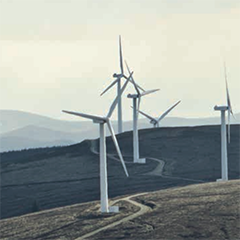Nick Green is head of energy in Scotland at real estate specialist, Savills. He specialises in advising landowners and developers involved with wind farms and other renewable energy infrastructure. Here, Nick gives us the lowdown on one of wind’s key battlegrounds.
Fresh from a UK General Election which has seen businesses, land owners and property managers ponder the impact of the outcome on their activities, it is now back to the day job for everyone concerned. However, while the environment did not feature heavily in the election debates, the issue of renewables remains a key political battleground. This is particularly the case when it comes to the topic of wind energy and the technology’s potential as a long-term investment opportunity.
Indeed, the capacity of onshore wind in Scotland reached 4,920 MW in 2014 and it is now the country’s most common form of enewable energy. Statistics from the Global Wind Energy Council indicate even further UK growth in 2015, following an exceptional 2014, with a predicted annual market increase of 44% and record combined onshore and offshore installations totalling more than 51GW. Recently, the UK saw 14% of all electricity generated by wind power; a new record and good progress towards 2020 renewables targets.
Onshore wind – the challenges
Before the UK election, Conservative Prime Minister David Cameron announced that the government would award no further subsidies to land-based wind farms in the UK. This followed a substantial degression of the Feed in Tariff (FIT) a year ago, in April 2014.
With a reshuffle in the Department for Energy and Climate Change (DECC), and the appointment of Amber Rudd as the new Energy and Climate Change Secretary, everyone is waiting for the inevitable update on renewable energy policy. Indeed, with a Manifesto that ignored solar and onshore wind, in favour of nuclear power and shale gas, the renewable sector has a job to do.





























